Last Updated: August 8, 2025
First impressions are really important, especially for documents like reports, proposals, and presentations. For example, a well-designed cover page can make a big difference when showing a business proposal to potential clients. It shows professionalism and builds trust right away.
A good cover page makes your work look polished and grabs the reader’s attention. But how can you Create a professional cover page using templates without spending hours designing it?
Luckily, Microsoft Word makes it easy to Create a professional cover page using templates—whether you use built-in templates or make your own design. You can also learn more about different Microsoft Word terms and their functions to get the most out of your document creation.
In this guide, we’ll show you how to Create a professional cover page using templates or custom designs. We’ll answer common questions and give helpful tips to make your documents look great.
Table Of Contents
Why a Professional Cover Page Is Important

A cover page is more than just a fancy first page—it sets the mood for the rest of the document. Here are some reasons why having a professional cover page matters:
- Makes a Good First Impression: A nice cover page shows that you care about details, making your work more appealing.
- Adds Credibility: A well-made cover page with the title, author, date, and company logo makes your document look official.
- Improves Readability: A clear cover page helps the reader understand the document’s purpose at a glance, making it easier to read.
Now, let’s explore how to Create a professional cover page using templates for your documents.
Making a Professional Cover Page Using Templates
1. Use Built-In Cover Page Templates in Microsoft Word
Microsoft Word has built-in cover page templates that let you Create a professional cover page using templates in just a few clicks. You can also customize these templates to fit your branding or document needs. Here’s how to use them:

- Step 1: Open Microsoft Word: Open Word and go to your document.
- Step 2: Go to the ‘Insert’ Tab: Click on the “Insert” tab at the top.
- Step 3: Select ‘Cover Page’: In the “Pages” group, click on “Cover Page.” You’ll see a list of professionally designed templates.
- Step 4: Choose a Template: Pick a template that matches your document’s theme. It will automatically be added as the first page.
These templates have placeholders for the title, subtitle, author, date, and other details. You can easily edit these fields to customize your cover page.
2. Benefits of Using Templates
Using templates has several benefits:
- Saves Time: Templates save you from designing from scratch, which is super helpful when you’re in a rush, like preparing for a last-minute presentation or meeting.
- Consistency: Templates make sure everything—like fonts, colors, and layout—looks professional and consistent.
- Easy for Beginners: Even if you’re not good at design, templates help you make a nice cover page easily.
You can also download more templates or use third-party designs to make your cover page more unique.
Making a Custom Cover Page Design
Templates are easy, but creating a custom cover page gives you complete control over the design. You can make it fit exactly what you need and match your brand.
1. What to Include in a Custom Cover Page
When designing a custom cover page, there are some key things you should include:
- Document Title: The biggest text on the cover page, showing what the document is about. To make it more interesting, try using action words or make it focused on solving a problem.
- Subtitle or Tagline: A short line that adds more context to the document.
- Author’s Name: The name of the person or team who made the document.
- Date: The date the document was created or published.
- Company Logo: If it’s for work, add your company logo to make it look professional.
2. Steps to Design a Custom Cover Page
Step 1: Set Up the Layout
- Go to the “Layout” tab in Word and set the page margins. For more details on how to adjust margins for different document types, check out our guide on Adjusting Page Margins for Different Document Types. This way, the cover page has enough white space and doesn’t look crowded.
Step 2: Add Text Boxes for Flexibility
- Use text boxes for the title, subtitle, and other elements. Text boxes make it easy to move things around until they look just right. For extra customization, learn How to Add Bing Search in Microsoft Word to enhance your document further.
Step 3: Add Visual Elements
- Add Shapes or Icons: Shapes can help separate parts or make the cover more interesting. Go to “Insert,” choose “Shapes,” and pick ones that fit your design.
- Include Images: You can add a background image or relevant picture, but make sure it doesn’t overpower the text.
Step 4: Use the Right Fonts and Colors
- Use fonts that are easy to read, like Arial, Calibri, or Times New Roman. Stick to one or two fonts for the cover page.
- Pick colors that match your brand or the document’s purpose. For a professional look, use simple colors that go with your brand.
3. Benefits of Custom Designs
- Unique Look: A custom cover page makes your document stand out, especially in competitive settings like business proposals or school projects.
- Matches Your Brand: Custom designs let you use your brand’s fonts, logos, and colors, making sure everything matches your organization.
- Creative Freedom: You can be creative and make a cover page that really fits the content and purpose of your document.
Common Questions About Cover Pages
1. Should I Always Use a Cover Page?
Using a cover page is a good idea for professional or school documents, like reports, proposals, or research papers. It helps make your document look polished and gives the reader important context.
2. Can I Customize Templates?
Yes! Microsoft Word lets you change templates to fit your needs. You can adjust fonts, colors, images, and other elements to match your brand or style. For further help, you can get help with Microsoft Word’s built-in support.
3. How Do I Save My Custom Cover Page as a Template?
To save your custom cover page for later:
- Select the entire cover page.
- Click on “Insert” > “Cover Page” > “Save Selection to Cover Page Gallery.”
- Name your template and click “OK.”
This makes it easy to reuse your custom cover page in other documents.
4. Are There Other Tools for Creating Cover Pages?
Yes, you can use tools like Canva, Adobe Spark, or Lucidpress to make cover pages. These tools offer lots of templates and options, especially if you want more design choices.
Tips for an Impressive Cover Page
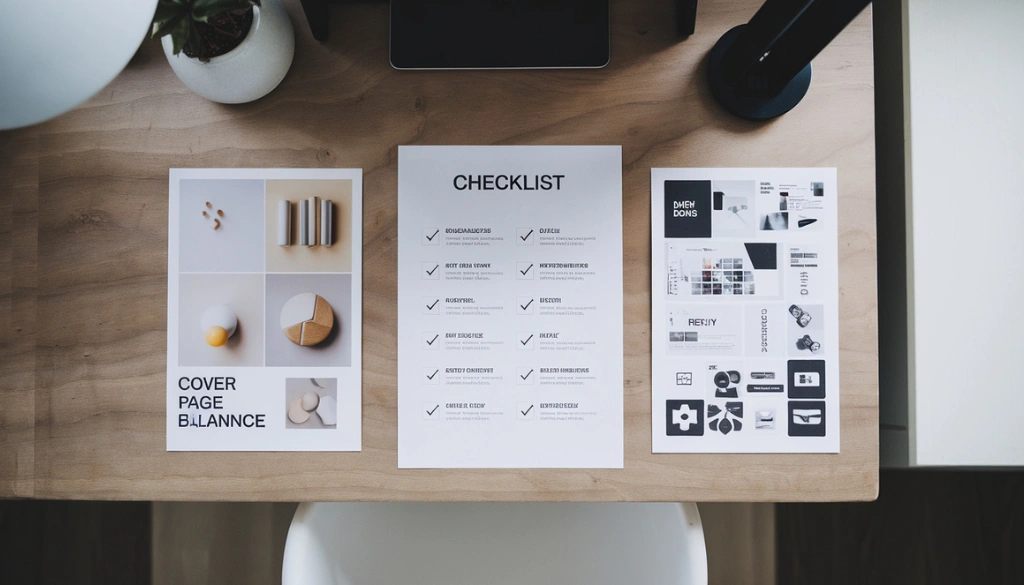
- Keep It Simple: A clean cover page is more effective. Include only the most important details and don’t add too much.
- Use High-Quality Images: Blurry images or low-quality logos make your cover page look unprofessional. Always use clear, high-quality visuals.
- Align Everything: Make sure all elements are lined up neatly. Consistent spacing and alignment make the cover page look polished.
- Check Readability: Make sure all text is easy to read. Print it out to see how it looks in real life.
Conclusion
Making a professional cover page can make a big difference in how your document is received. Whether you use templates or make your own design, both options offer flexibility—templates are fast and consistent, while custom designs let you be more creative and match your brand. A well-made cover page helps create a good first impression, gives important context, and improves how your document looks overall. For more detailed instructions, visit the official Microsoft Word Help & Learning page.
Ready to make your own cover page? Follow the steps in this guide and see how a great cover page can change the way your documents are seen.

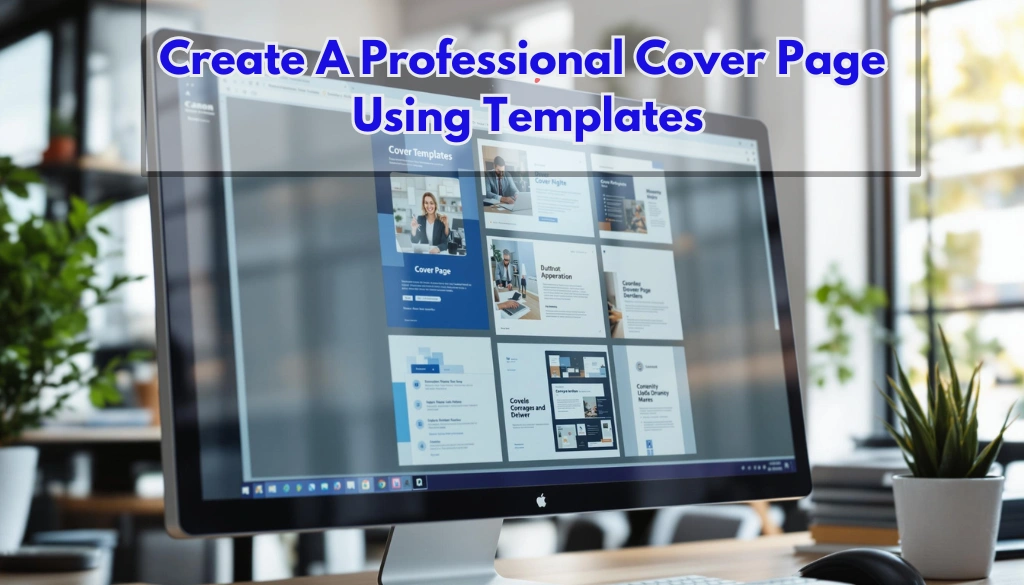
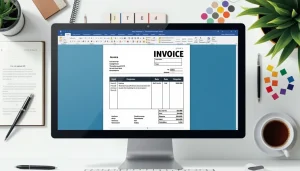
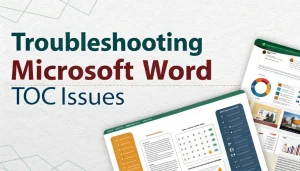
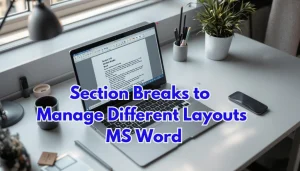

Pingback: How To Create Custom Word Themes & Brand Style Sets In Word? | MSW Tutor.